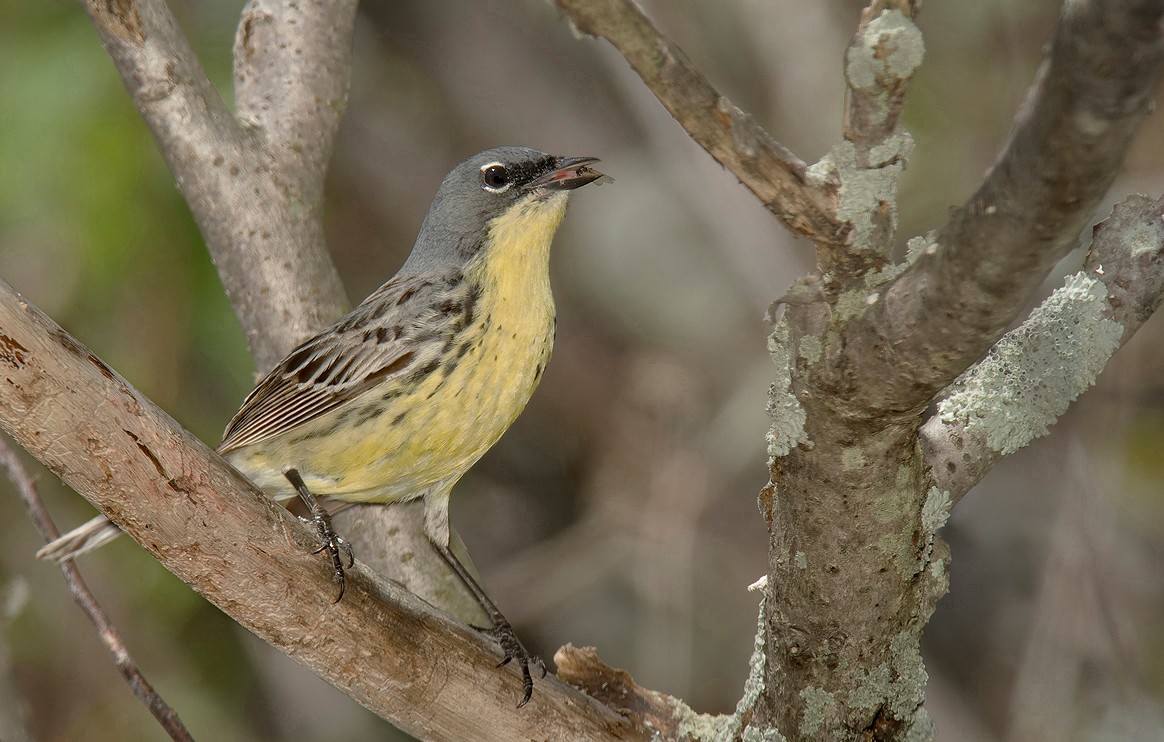 Where does the kirtland's Warbler live?
Where does the kirtland's Warbler live?
Where does the kirtland's Warbler live?
In their winter habitat, they have been found primarily in low "coppice" habitat, especially areas which have been cleared for slash-and-burn agriculture but have regrown after abandonment (98% of all records), with a preference for dense shrubbery with small openings here and there, no canopy and low ground cover. It has otherwise been found in all habitats on the islands, including, albeit uncommonly, suburban gardens and Bahamian pineyards, with the exception of high coppice which has never been clear cut -it has never been seen here. With rare exceptions this bird is almost always sighted from the ground to 3m high (98%). For breeding habitat it requires large areas of young jack pine (Pinus banksiana) on sandy soil. Kirtland's warblers occur in greatest numbers in large areas that have been clear cut or where a large wildfire has occurred. For breeding they require stands of young (6 to 20 year old, 2–4 m high) jack pine trees. Other common plants in this habitat are blueberry (Vaccinium angustifolium), sweet fern (Comptonia peregrina), Canada mayflower (Maianthemum canadense) and various grasses. Although it was initially believed to exclusively require jack pine stands, more recent research has found that the bird will also breed in some places in young stands of red pine (Pinus resinosa) of 10 to 15 years old. When the pine stands grow so tall so as to loose their lowest branches near the forest floor, the environment no longer provides sufficient cover. Such stands are ideally densely stocked with young pines, but also contain small occasional patches of open areas or with sparse tree cover. Controversy The overwintering habitat has been contentious with researchers disputing each others work. Mayfield (1992, 1996) first stated that the bird inhabits the shrub layer. Lee et al. (1997) also believed that the warbler inhabits shrubs, but they concluded that the species is entirely dependent on pineyards, stating that before the advent of deforestation of the high coppice after the colonisation of The Bahamas by pre-colonial Lucayan peoples, the bird must have been restricted to the northwestern islands which harbour these pineyards and absent from central, eastern and southern islands such as Eleuthera. Sykes and Clench (1998) on the other hand, basing their analysis on 96 unambiguous records of both collected specimens and observations on thirteen different islands, as well as almost 451 observations over three months of the same two banded individuals on Eleuthera, found themselves unable to agree with this, finding that by far most records were from regrown coppice after abandonment of agricultural fields. They, as well as Mayfield, state many of the earlier records used by Lee et al. were tainted by misidentification with S. dominica flavescens, a similar-looking subspecies which was not adequately described or illustrated in almost all guide books at the time. A few months later the same three authors as in the 1997 work, Haney et al. (1998) published a repudiation of Sykes and Clench based on 101 warbler records, wherein they claimed the warblers do not prefer scrub coppice and reiterated their earlier assertion that the primary habitat of the birds was pineyards. They went even further in concluding that the world population of the warbler was not limited by the situation in their breeding range in Michigan, but that historic fluctuations in their population were instead being determined by the status of the pineyards in Bahamas. A detailed study by Wunderle et al. (2010) using a much larger sample size of new data from 153 capture sites and 499 observations, and investigations of the diet, found that Sykes and Clench had been correct, and there was no validity to the assertions of Lee, Walsh-McGehee and Haney. Jones et al. (2013), researching the warbler on an island where pineyards had never grown, hypothesised that a sampling bias for birds in pineyards had skewed the results of the research presented by Haney et al. Despite the evidence, Birdlife International, which performs the IUCN Red List assessments, has consistently copied and pasted their assertion of preference for accepting the Haney et al. interpretation, because they state the conclusion that "changes in population have occurred contemporaneously with the degradation and recovery of the north Bahamas pine ecosystem" is more compelling than that the recovery efforts in Michigan were having these effects on the population size, although they also contradict themselves in the same assessments. Haney et al. stated that another reason that this warbler was most likely restricted to the pineyards habitat was because there was no low coppice habitat available until the arrival of the first human colonists on the islands, the Lucayans some 1,000 years ago, because there was no mechanism that could destroy the natural high coppice of the islands. However, in 2007 Wunderle et al pointed out an obvious natural destructive force which might produce such young successional habitat, hurricanes. Although they had no empirical evidence, they theorised that perhaps this warbler species had specifically evolved to take advantage of such weather phenomena.
People often ask
Related Searches
Scientific Classification
Phylum
Chordates Class
Birds Order
Perching birds Family
New world warblers Genus
Setophaga Warblers Species
Kirtland's Warbler 